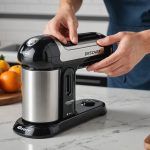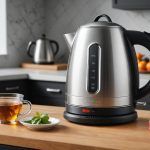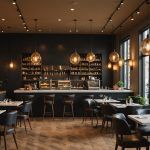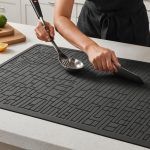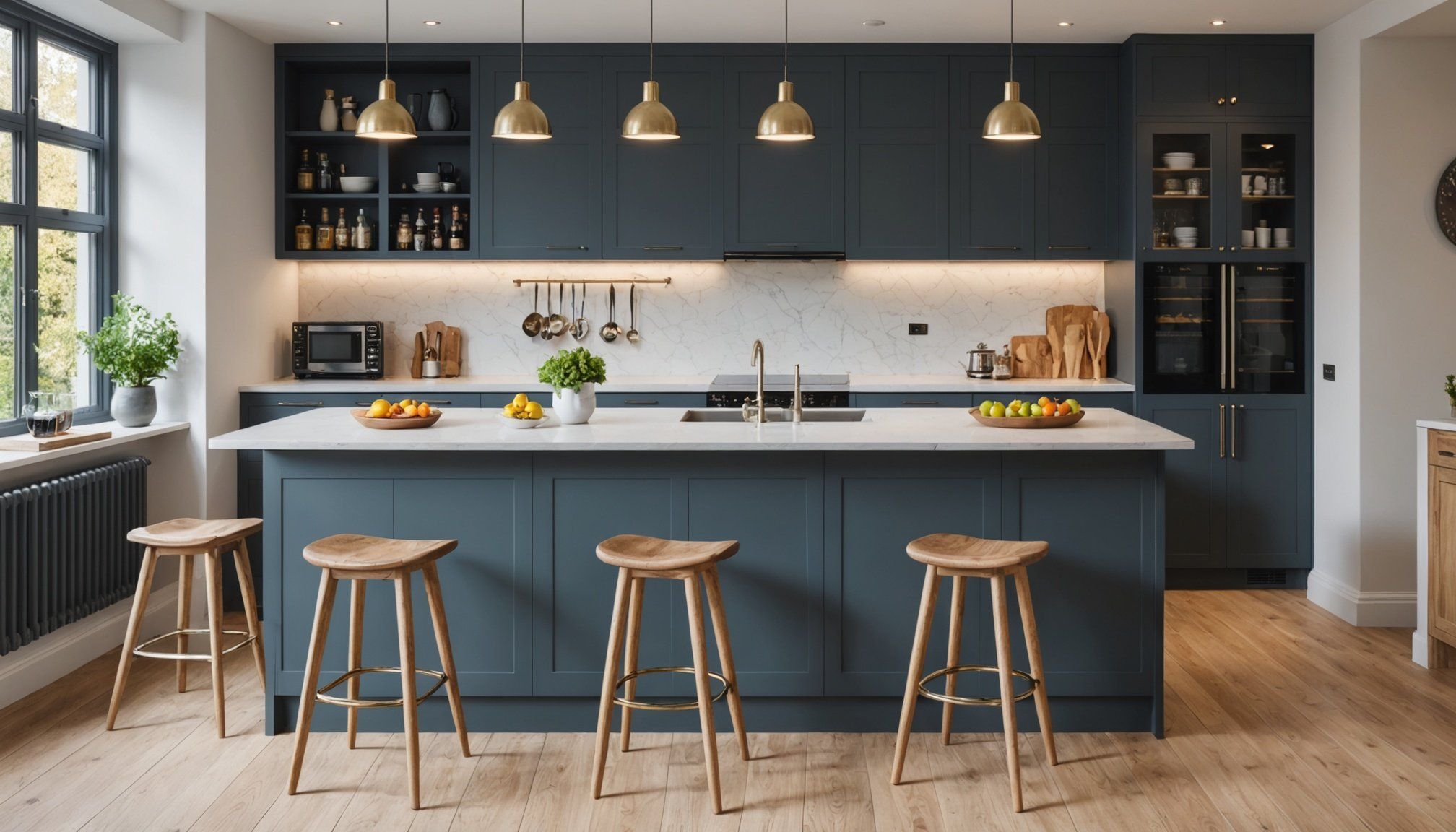Overview of Breakfast Bar Benefits
A breakfast bar is a valuable addition to any kitchen, offering numerous advantages and enhancing the overall functionality of the space. By optimizing your kitchen’s layout, it efficiently utilizes space that might otherwise go unused. The design trends for breakfast bars have evolved, making them an attractive feature in contemporary kitchens.
One of the key benefits of a breakfast bar is its ability to create a social hub. It serves as a central point for family gatherings, informal meals, and casual conversations, fostering a sense of community. The breakfast bar not only improves kitchen practicality but also adds a touch of modern elegance, aligning with current design trends.
Also to discover : The ultimate guide to selecting ideal kitchen flooring for your uk coastal home
Installing a breakfast bar can significantly add value to your home. Potential buyers often look for updated and multifunctional kitchen spaces, and a well-crafted breakfast bar responds to this demand. By integrating a breakfast bar, homeowners can enhance their kitchen’s appeal, making it a desirable selling point.
Adopting a breakfast bar not only embraces the latest design trends but also ensures that the kitchen remains versatile and accessible, meeting the needs of modern lifestyles. More than just an aesthetic improvement, a breakfast bar is a strategic enhancement for space functionality and home value.
Topic to read : Maximize your savings: the ultimate guide to snagging the best uk kitchen gadgets in seasonal sales
Planning Your Breakfast Bar
When planning a breakfast bar, careful consideration of your kitchen layout is crucial. This involves thorough space planning to ensure the breakfast bar enhances rather than obstructs kitchen utility. Understanding the available space and how it interacts with the rest of your kitchen is fundamental in creating a practical and visually appealing addition.
Measuring Your Space
Accurate measurements are vital. They ensure your breakfast bar fits seamlessly and complements the room’s overall design. Begin by measuring the kitchen layout to determine the space available for the bar. Consider elements like existing countertops and cabinetry. Adequately accounting for space ensures your breakfast bar is not only functional but also aesthetically pleasing.
Assessing Kitchen Flow
Another essential factor is the kitchen flow. This refers to the movement within the kitchen and how well different sections communicate with one another. Proper assessment ensures your breakfast bar doesn’t disrupt the work triangle, the relationship between the sink, stove, and refrigerator. Maximising flow involves predicting how the new structure will influence everyday kitchen activities.
Determining the Bar Position
Lastly, choosing the right position for your breakfast bar aids accessibility and interaction. When considering design considerations, focus on locations offering ease of access and facilitating social interaction, enhancing both the practicality and social hub function of your kitchen.
Design Options for Breakfast Bars
Choosing the right breakfast bar design involves a delicate balance between style and functionality. Understanding styling options helps create a kitchen that is both visually appealing and efficient. One must consider whether a contemporary or traditional design suits their overall décor theme. Contemporary designs typically feature sleek lines and minimalistic aesthetics, while traditional designs often incorporate elegant details and classic materials.
Contemporary vs. Traditional Designs
When distinguishing between contemporary and traditional breakfast bars, consider the overall theme of your home. Contemporary styles emphasise clean lines and a modern look, often integrating tech-friendly features. Traditional designs, however, bring a cozy charm, utilising ornate woodwork and warm tones.
Popular Shapes and Sizes
Aesthetic choices extend to the bar’s shape and size. An island bar offers a free-standing element, ideal for larger kitchens. Alternatively, peninsula bars attach to existing countertops, providing additional workspace without occupying much room. Lastly, wall-mounted designs are perfect for compact areas.
Color and Material Choices
Selecting the right color and material choices is crucial for durability and maintaining the desired aesthetic. Materials like granite or quartz offer robustness, while lighter woods create a softer look. Bold colours can make a statement, whereas neutral tones ensure versatility with evolving kitchen trends.
Materials and Finishes
Selecting the right kitchen materials is crucial in ensuring both longevity and aesthetics for your breakfast bar. When it comes to countertop options, materials like granite, quartz, and wood are popular due to their durability and visual appeal. Granite offers robust strength and a polished finish, making it a staple for luxury kitchens. On the other hand, quartz provides a non-porous surface resistant to stains, ideal for busy households. Wood offers warmth and a classic touch, though it requires regular maintenance to keep it in prime condition.
Diving into base construction materials, options such as MDF (Medium-Density Fibreboard), plywood, and hardwoods each bring distinct advantages. MDF is economical and versatile, great for painted finishes. Plywood is a middle-ground choice, offering structural integrity and cost-effectiveness. Meanwhile, hardwoods, though pricier, provide enduring durability and are often sought for their natural beauty in traditional or rustic designs.
For surface finishes, consider how they align with your kitchen’s overall style. Glossy finishes reflect light, adding a modern flair, but may show fingerprints easily. Matte finishes offer a subtle elegance and are lower maintenance. Strategically selecting complementary finishes ensures your breakfast bar harmonizes with prevailing UK kitchen trends.
Cost Estimation for Your Breakfast Bar
Creating a breakfast bar involves several costs that vary based on materials, labour, and additional features. Material costs constitute a significant portion of the budget. Luxury materials like granite and quartz can sharply increase expenses, while MDF and plywood offer a more cost-effective solution without sacrificing quality. Understanding these distinctions allows for better financial planning and ensures your project stays within budget.
Material Costs
Different materials come with varying price points. Granite and quartz, though more expensive, provide exceptional durability. Opting for wood or laminate can significantly reduce expenses, offering both aesthetic choice and budget-friendliness. Carefully selecting materials that align with both your style and budget is essential.
Labor and Installation Expenses
The installation process can also be a financial consideration. Hiring professionals ensures precision and longevity but often comes at a higher cost. Alternatively, a DIY approach might lessen expenses but requires skill and time. Accurately estimating these expenses aids in comprehensive budgeting.
Budgeting Tips
To avoid overspending, map out a detailed budget. Prioritise high-impact upgrades and identify areas to economise. Research thoroughly to find reliable contractors offering competitive prices. Thoughtful budgeting is crucial, allowing for a beautiful, cost-efficient breakfast bar.
Incorporating Functionality and Features
Adding a breakfast bar introduces opportunities to enhance kitchen functionality by integrating intelligent features. The key is to design with practical enhancements that align with lifestyle needs and preferences.
Storage Solutions
Innovative storage solutions can maximize space efficiency. Consider integrating cabinets or built-in shelving within the breakfast bar to keep kitchen gadgets or dining essentials organized and easily accessible. This not only maintains a tidy appearance but also facilitates quick, convenient access during meal prep or dining times.
Electrical Outlets and Lighting
Incorporate sufficient electrical outlets to power appliances or charge devices, ensuring the functionality of the breakfast bar aligns with modern living standards. Adequate lighting is equally essential; pendant lights can serve both illumination and aesthetic purposes, creating a cosy ambiance for dining or social interactions.
Space for Accessories
Designing space for accessories enhances utility and personalisation. Allocate areas for placing decorative items, small appliances, or a coffee station, enabling a personal touch while keeping with the bar’s functional goals. Each addition should complement the kitchen’s workflow, enhancing usability and maintaining a cohesive aesthetic.
Common Pitfalls to Avoid
Kitchen renovation mistakes can derail your breakfast bar project, making awareness key. One of the primary issues is frequently overlooked measurements. Ensuring precise dimensions is crucial; miscalculations can lead to installation woes, wasting both time and resources.
Design errors often arise from ignoring the kitchen’s natural flow. Poorly placed bars may hinder essential areas, disrupting the work triangle. To avoid this, consider movement patterns and accessibility when designing. This guarantees seamless integration into your kitchen’s existing layout.
Misjudging material selection can compromise both aesthetics and durability. Opt for materials that complement your kitchen’s style yet withstand daily wear. Neglecting this aspect might result in a breakfast bar that ages poorly or fails to meet practical needs.
Lastly, project challenges often stem from failing to incorporate user needs and functionality. A visually stunning breakfast bar that lacks practical features soon becomes a burden. Consider the integration of accessories and appliances to enhance utility.
In summary, each stage of planning should reflect a balance between creativity and practicality, ensuring your breakfast bar adds value without unnecessary complications. Taking these considerations into account will help craft a successful outcome tailored to your needs.
Examples of Successful Breakfast Bars
Exploring kitchen inspiration brings us to various successful breakfast bar designs that have captivated homeowners throughout the UK. These real-life examples serve as beacons of creativity and practicality in kitchen design.
Case Studies of UK Kitchens
A blend of contemporary and traditional styles is evident in UK breakfast bars. One notable example highlights a modern open-plan kitchen featuring a sleek island breakfast bar with integrated appliances. Such designs enhance the kitchen’s appeal while boosting functionality. Another case showcases a cozy peninsula bar crafted from rich oak, complementing a country-style kitchen and facilitating easy social interaction.
Visual Aids and Inspirations
For those seeking DIY inspiration, visual examples featuring diverse color palettes and configurations are key. Kitchens adorned with vibrant color accents against muted tones often provide a striking visual contrast that elevates the bar’s aesthetic. Consider setups with unique fixtures such as industrial pendant lamps, which add a modern twist to traditional layouts.
User Experiences and Testimonials
Hearing from individuals who have incorporated these designs offers invaluable insights. Users frequently praise the balance of style and practicality, noting enhanced family gatherings and efficient meal preparation. Testimonials often stress the importance of integrated appliances and storage solutions within breakfast bars, emphasizing their pivotal role in daily activities.

